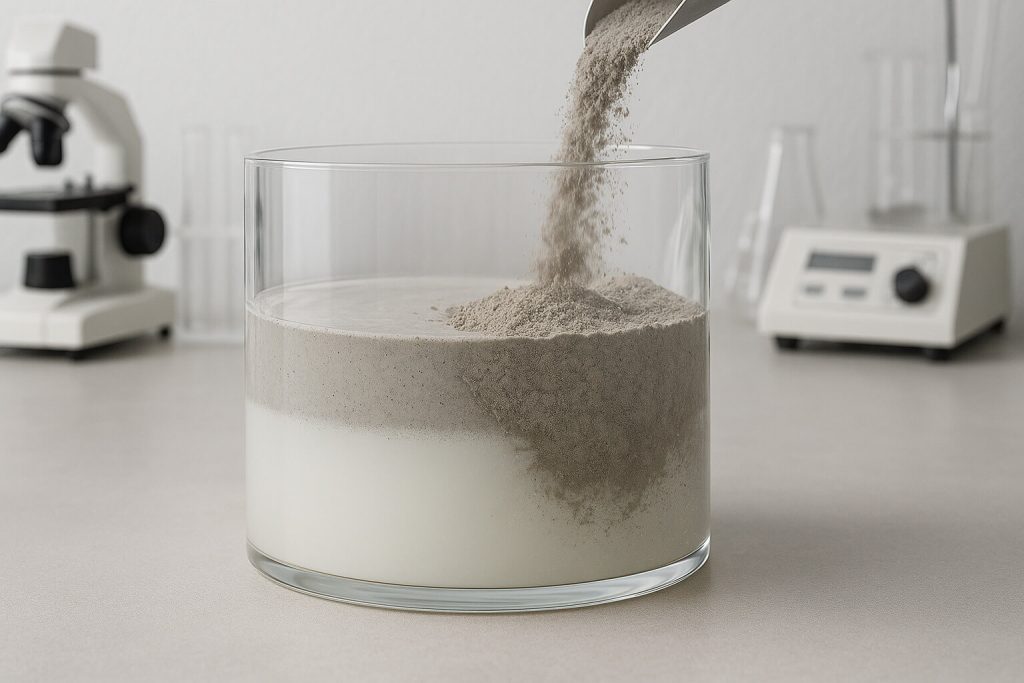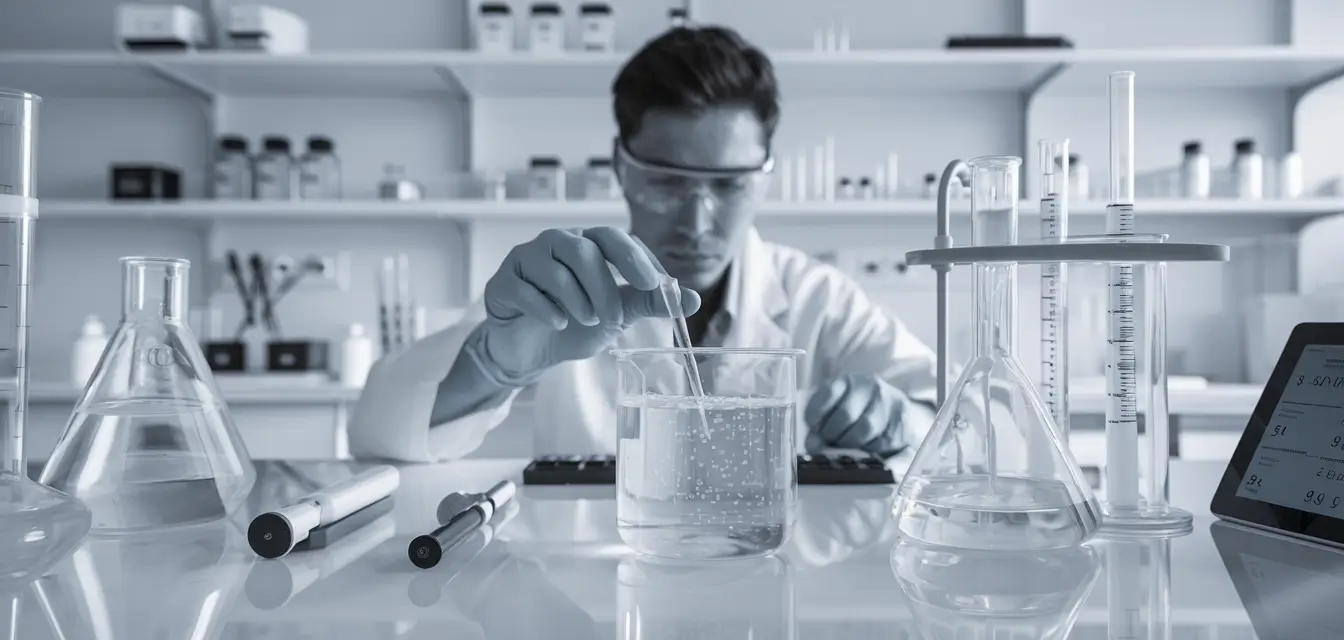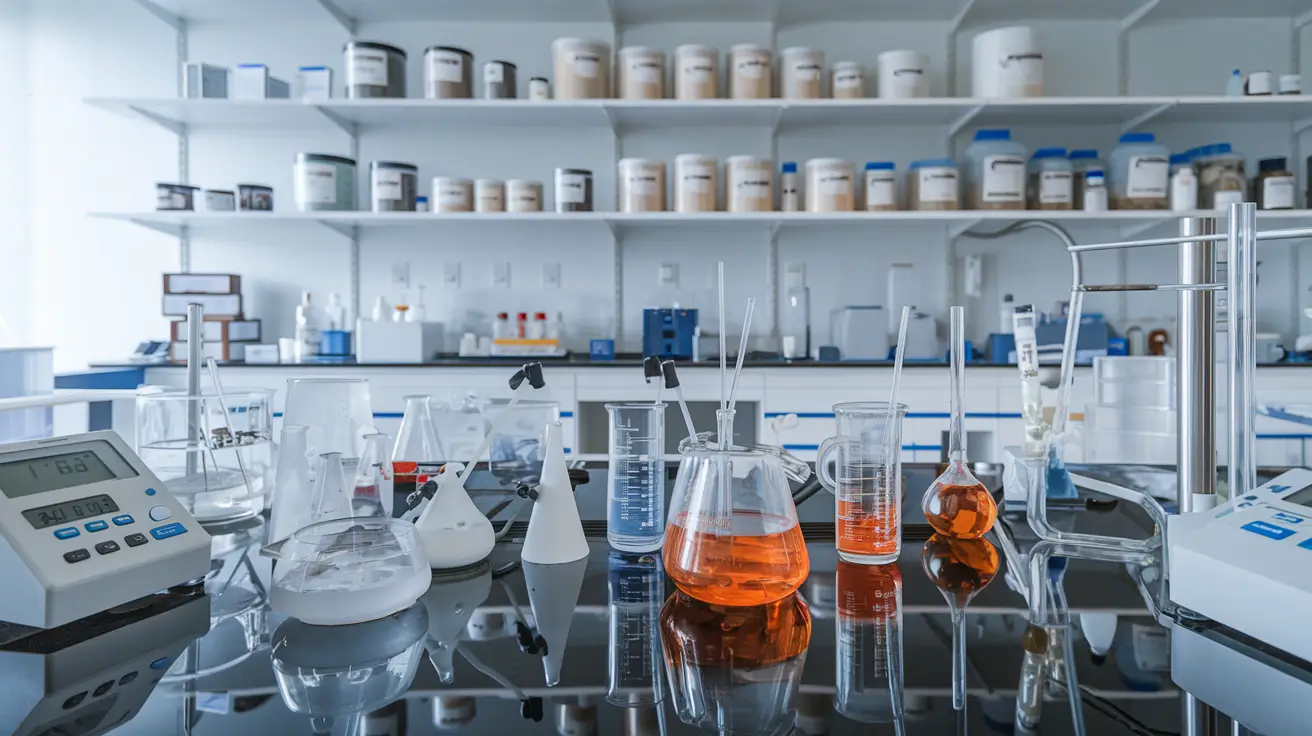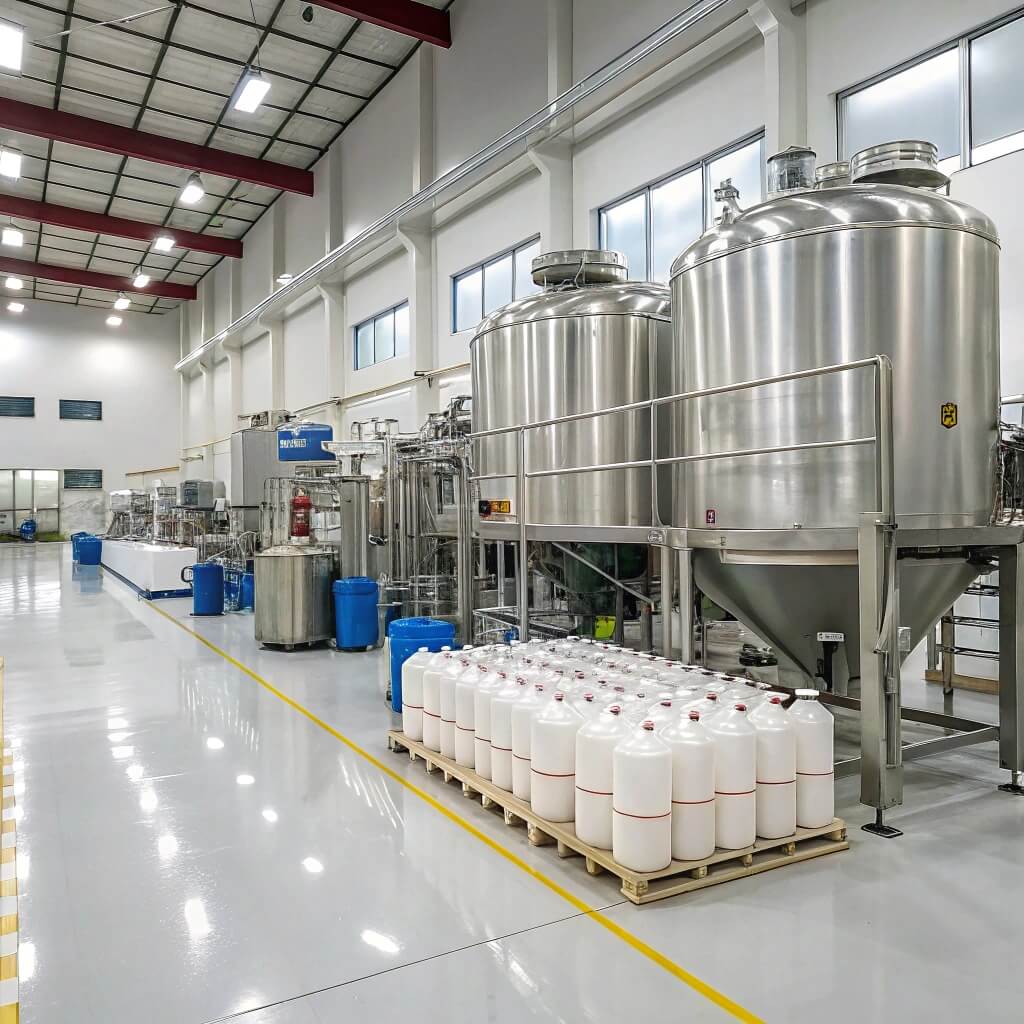Choosing the right ingredients for self-leveling mortar is crucial for ensuring a smooth and durable surface. One of the key components in this process is Hydroxypropyl Methylcellulose (HPMC), specifically the MP400 grade. This low-viscosity, high-water-retention cellulose is particularly beneficial in self-leveling mortar applications. But here’s the kicker – understanding why and how HPMC MP400 works in these formulations can make a significant difference in product performance. In this article, we’ll explore why HPMC MP400 is ideal for self-leveling mortar, how it affects performance, and the benefits it brings to construction projects.

1. What is HPMC MP400 and Why is it Used in Self-Leveling Mortar?
HPMC MP400 is a low-viscosity grade of Hydroxypropyl Methylcellulose (HPMC) commonly used in construction materials like self-leveling mortar. This cellulose derivative is non-ionic, water-soluble, and functions as a thickener, stabilizer, and binder in various formulations. So, what’s the real story here? The primary benefit of using HPMC MP400 in self-leveling mortars lies in its unique properties: low viscosity and high water retention.
Low viscosity allows the mortar to flow easily, making it easier to spread and level across surfaces, ensuring smooth, uniform finishes. The high water retention ensures that the mortar does not dry too quickly, which is critical for maintaining workability and strength during application. Without the right balance of viscosity and water retention, the mortar could set too quickly, causing cracking or inconsistencies in the final finish.
In addition, HPMC MP400 enhances the adhesion of self-leveling mortars, ensuring that the mortar bonds effectively with the surface and maintains its integrity over time. This makes it a valuable component in both residential and commercial flooring applications, where long-lasting, high-performance surfaces are required.
| Property | HPMC MP400 | Impact on Self-Leveling Mortar |
|---|---|---|
| Viscosity | Low | Easy to spread and apply |
| Water Retention | High | Prevents quick drying and cracking |
| Adhesion | Excellent | Ensures long-lasting bond with surfaces |
2. How Does HPMC MP400 Affect the Workability of Self-Leveling Mortars?
When it comes to self-leveling mortars, workability is a critical factor. But here’s where it gets interesting – HPMC MP400 plays a major role in enhancing the workability of the mortar. Low viscosity means the mortar has a more fluid consistency, making it easier to mix, spread, and level. This allows workers to achieve smoother, more uniform surfaces with less effort.
In practice, this translates into better efficiency on the job site. Since HPMC MP400 enables the mortar to flow easily, it reduces the chances of air bubbles forming and ensures a more consistent surface. Furthermore, the high water retention properties of HPMC MP400 extend the working time of the mortar, allowing for longer periods of manipulation without the material setting too quickly. This gives workers more time to make adjustments and ensures that the finished surface is flawless.
For example, in commercial flooring applications where large areas need to be covered, the ease of application provided by HPMC MP400 can significantly reduce labor time and improve the overall outcome. Whether you’re dealing with a smooth concrete slab or a more complex substrate, the right viscosity in your self-leveling mortar is crucial for ensuring that the job gets done efficiently and with professional results.
| Viscosity | Workability Impact | Application Outcome |
|---|---|---|
| Low | Easy to mix and spread | Smooth, uniform finish |
| High Water Retention | Longer working time, prevents quick setting | More time for adjustments |
3. What is the Role of Water Retention in Self-Leveling Mortars?
Water retention is an often-overlooked but critical property in self-leveling mortars. What’s the real story here? HPMC MP400’s high water retention ability ensures that the mortar remains workable over a longer period, which is particularly beneficial during extended applications or in environments where humidity may affect the drying process.
Without proper water retention, self-leveling mortar can set too quickly, leading to uneven surfaces, cracking, or poor bonding. On the other hand, a mortar with too much water retention might not achieve the required strength once it dries. HPMC MP400 strikes the right balance by maintaining the right moisture levels in the mixture, allowing for controlled curing and an optimal final product.
This is particularly important in larger flooring applications, where uniformity is paramount. With HPMC MP400, the self-leveling mortar remains workable for longer, ensuring that there are no dry spots or inconsistent textures across the surface. Whether you’re applying mortar to large slabs or intricate patterns, water retention helps ensure the success of the project.
| Water Retention | Effect on Mortar Performance | Outcome |
|---|---|---|
| High | Prevents premature drying and cracking | Uniform finish, reduces defects |
| Balanced | Ensures optimal curing time and strength | Enhanced bond and durability |
4. How Does Low Viscosity HPMC Improve Performance in Mortar Formulations?
The viscosity of HPMC plays a crucial role in determining the performance of self-leveling mortars. Ready for the good part? Low viscosity HPMC like MP400 improves the overall fluidity and application of the mortar, which is essential for achieving the desired texture and finish.
Low viscosity HPMC ensures that the self-leveling mortar flows more easily, providing better coverage and reducing the risk of uneven surfaces. In addition, it enhances the bonding capabilities of the mortar, ensuring that the mixture adheres well to the substrate and remains durable over time.
In practical terms, using low viscosity HPMC MP400 helps in large-scale applications, reducing the effort required to spread the mortar across surfaces. It also makes the product more versatile, as it can be applied smoothly to a variety of substrates without compromising the final finish. This performance boost is particularly beneficial in environments where precision and efficiency are key.
| Viscosity | Effect on Mortar | Impact |
|---|---|---|
| Low Viscosity | Improved flowability and smoothness | Easier to apply, more uniform finish |
| Low Viscosity + High Water Retention | Better bonding and reduced cracking | Stronger adhesion and durability |
5. What Are the Benefits of Using HPMC MP400 in Self-Leveling Mortar for Flooring?
When it comes to flooring applications, self-leveling mortars must be of the highest quality to ensure durability and performance. But here’s where it gets interesting – HPMC MP400 offers several distinct advantages in these applications. For instance, its high water retention ensures that the mortar does not dry too quickly, allowing the installer ample time to spread and level the surface before it sets.
Additionally, the low viscosity of HPMC MP400 provides a smooth, even spread, ensuring that the surface is level and consistent. This is especially important in flooring applications where even the slightest imperfection can lead to costly repairs or damage. Furthermore, using HPMC MP400 in self-leveling mortar improves adhesion, ensuring that the mortar bonds well with the substrate and does not peel or crack over time.
Ultimately, using HPMC MP400 in self-leveling mortars improves the quality and efficiency of the application, ensuring a superior finish and longer-lasting performance. It’s the ideal solution for both residential and commercial flooring projects where quality and reliability are paramount.
| Property | Benefit in Flooring Application | Result |
|---|---|---|
| Low Viscosity | Easier application and spreading | Smooth, uniform finish |
| High Water Retention | Reduced risk of drying and cracking | Improved strength and adhesion |
| Excellent Adhesion | Better bonding with substrates | Long-lasting, durable floors |
6. How Does HPMC MP400 Contribute to Enhanced Adhesion and Bond Strength?
One of the key properties of HPMC MP400 is its ability to improve the adhesion and bond strength of self-leveling mortars. What’s the real story here? The high water retention and low viscosity of HPMC MP400 contribute to stronger bonding between the mortar and the surface, ensuring a durable and long-lasting bond.
For example, in construction projects where adhesion is crucial for the integrity of the floor, HPMC MP400 ensures that the self-leveling mortar adheres effectively to a variety of substrates, including concrete, tiles, and wood. It reduces the risk of peeling or cracking over time, ensuring that the floor remains intact even under heavy foot traffic or stress.
In flooring applications, strong adhesion prevents issues like uneven settling or cracking, which can lead to costly repairs. HPMC MP400 is particularly beneficial in high-traffic areas where the floor needs to withstand significant wear and tear while maintaining a smooth and intact surface.
| Property | Impact on Adhesion | Application Outcome |
|---|---|---|
| High Water Retention | Increased bonding strength | Stronger bond with surfaces |
| Low Viscosity | Improved flow and application | Smooth, durable finish |
| Excellent Adhesion | Reduces risk of peeling and cracking | Long-lasting, resilient floors |
7. How Can HPMC MP400 Be Adjusted to Meet Specific Application Needs?
HPMC MP400 is versatile, and its properties can be adjusted to meet the specific needs of a wide range of applications. Ready for the good part? By adjusting the concentration of HPMC MP400 or blending it with other additives, manufacturers can customize the viscosity and water retention to achieve the desired performance.
For instance, if a particular project requires a more fluid mortar for quick application, the concentration of HPMC MP400 can be adjusted to achieve a lower viscosity. Conversely, for applications that require stronger water retention and slower setting times, the concentration can be increased.
This flexibility makes HPMC MP400 an ideal choice for a variety of construction applications, ensuring that it can be tailored to meet the specific needs of different projects, substrates, and environmental conditions.
| Adjustment Method | Resulting Change in Performance | Application Example |
|---|
|
| Increase Concentration| Higher viscosity, better water retention | Controlled-release applications |
| Decrease Concentration| Lower viscosity, faster drying | Quick application in large areas |
| Blend with Additives | Enhanced performance properties | Customizable formulations for different needs |
8. How Does HPMC MP400 Compare to Other Cellulose Derivatives in Mortar Formulations?
When selecting the right cellulose derivative for mortar applications, it’s essential to understand how HPMC MP400 compares to other types of cellulose derivatives. What’s the real story here? While other cellulose derivatives may offer some benefits, HPMC MP400 stands out due to its unique combination of low viscosity and high water retention, making it particularly effective in self-leveling mortars.
Compared to other cellulose derivatives, HPMC MP400 provides a better balance between ease of application, durability, and adhesion. Other derivatives may offer higher viscosity, which can reduce flowability, or lower water retention, which can lead to quicker drying and cracking. HPMC MP400 offers the best of both worlds, making it the preferred choice for self-leveling mortars in both residential and commercial applications.
| Cellulose Derivative | Viscosity | Water Retention | Application |
|---|---|---|---|
| HPMC MP400 | Low | High | Self-leveling mortars, flooring |
| Methylcellulose | Medium | Low | Quick-drying applications |
| Hydroxyethylcellulose | High | Medium | Adhesives, high-strength bonds |
9. What Are the Key Considerations When Choosing HPMC for Self-Leveling Mortar?
When choosing HPMC for self-leveling mortar, several factors need to be considered to ensure optimal performance. Ready for the good part? The key considerations include viscosity, water retention, and adhesion properties. Additionally, you’ll want to evaluate the environmental conditions, such as temperature and humidity, as these can affect how the HPMC behaves during application and curing.
For instance, if you’re working in a hot, dry environment, you may want to choose an HPMC grade with higher water retention to compensate for the rapid evaporation of water. On the other hand, in colder climates, you may need a formulation with lower viscosity to ensure that the mortar flows properly even at lower temperatures.
| Consideration | Impact on Application | Importance |
|---|---|---|
| Viscosity | Affects flowability and workability | Ensures easy application |
| Water Retention | Prevents premature drying | Ensures proper curing |
| Adhesion | Improves bond strength | Ensures durable, long-lasting results |
10. What Are the Potential Challenges and Solutions When Using HPMC MP400 in Mortar?
Like any material, using HPMC MP400 in self-leveling mortars can come with a few challenges. What’s the real story here? One potential challenge is the variability in environmental conditions, which can affect how the HPMC behaves during mixing and application. Temperature fluctuations, humidity, and substrate type can all influence the final outcome.
To overcome these challenges, it’s essential to conduct thorough testing and quality control checks before applying HPMC MP400 in a large-scale project. By adjusting the formulation based on the environmental conditions, you can ensure that the mortar performs as expected.
| Challenge | Solution | Impact |
|---|---|---|
| Environmental Variability | Adjust formulation and test thoroughly | Consistent application and performance |
| Premature Drying | Increase water retention in mixture | Smooth, consistent finish |
Conclusion
In conclusion, HPMC MP400 is an excellent choice for self-leveling mortar applications due to its unique combination of low viscosity and high water retention. This grade of HPMC improves workability, enhances adhesion, and ensures a smooth, durable finish in flooring and construction projects. By understanding how HPMC MP400 impacts mortar performance, you can make informed decisions about the right formulation for your specific application needs, ensuring the success of your project.
FAQ Section
Q1: What is HPMC MP400?
A1: HPMC MP400 is a low-viscosity grade of Hydroxypropyl Methylcellulose used in self-leveling mortars. It improves workability, water retention, and adhesion.
Q2: How does HPMC MP400 work in self-leveling mortar?
A2: HPMC MP400 helps improve the flowability and adhesion of the mortar while preventing quick drying. Its high water retention ensures a smooth, uniform finish.
Q3: Why is water retention important in self-leveling mortars?
A3: Water retention prevents the mortar from drying too quickly, ensuring consistent curing and reducing the risk of cracks or uneven surfaces.
Q4: How does HPMC MP400 improve adhesion and bond strength?
A4: HPMC MP400 enhances the mortar’s ability to bond with surfaces, ensuring a strong, long-lasting bond that remains intact over time.
Q5: Can HPMC MP400 be adjusted for specific applications?
A5: Yes, HPMC MP400 can be adjusted by modifying its concentration or combining it with other additives to meet the specific viscosity and water retention needs of different applications.




